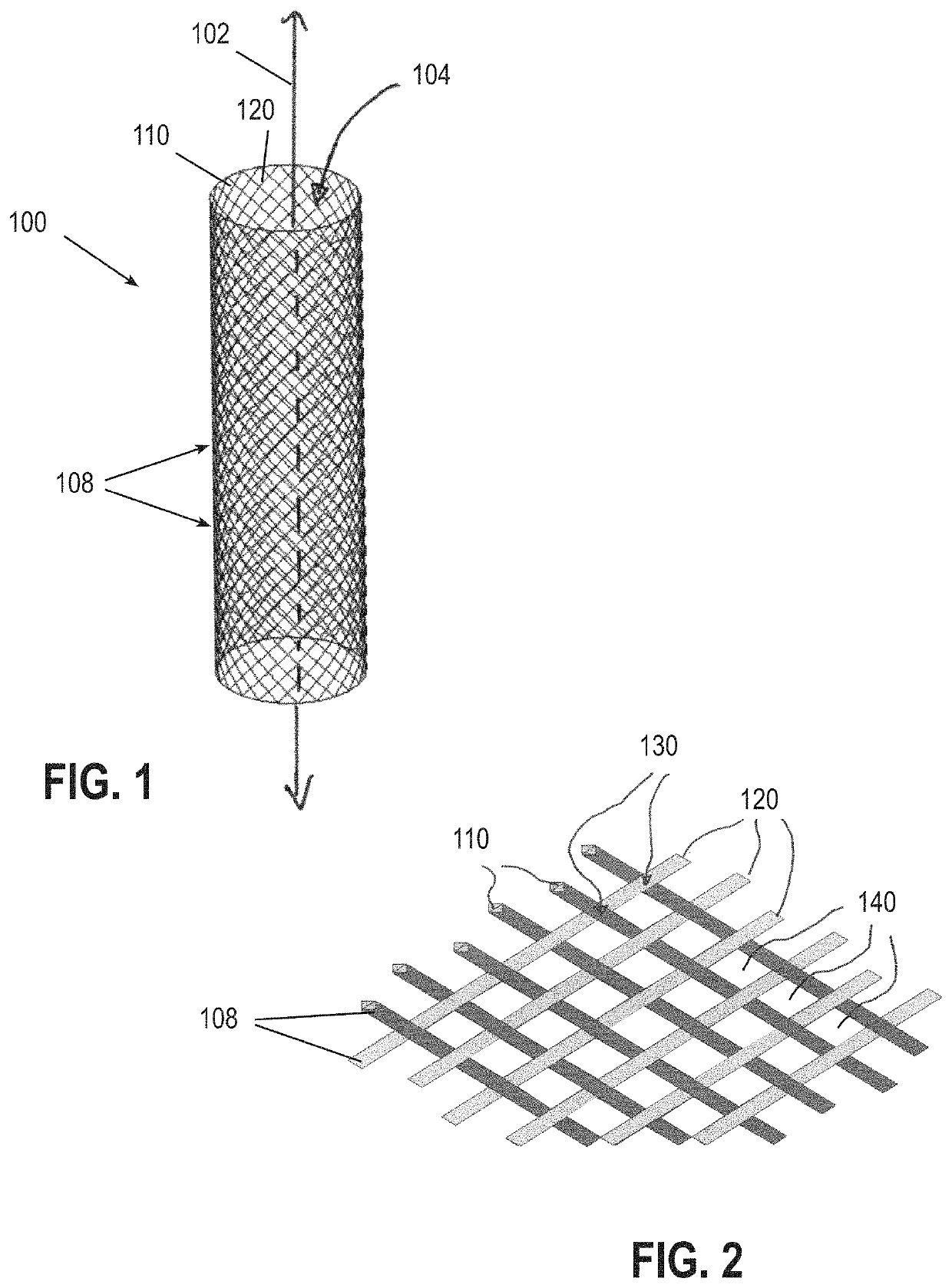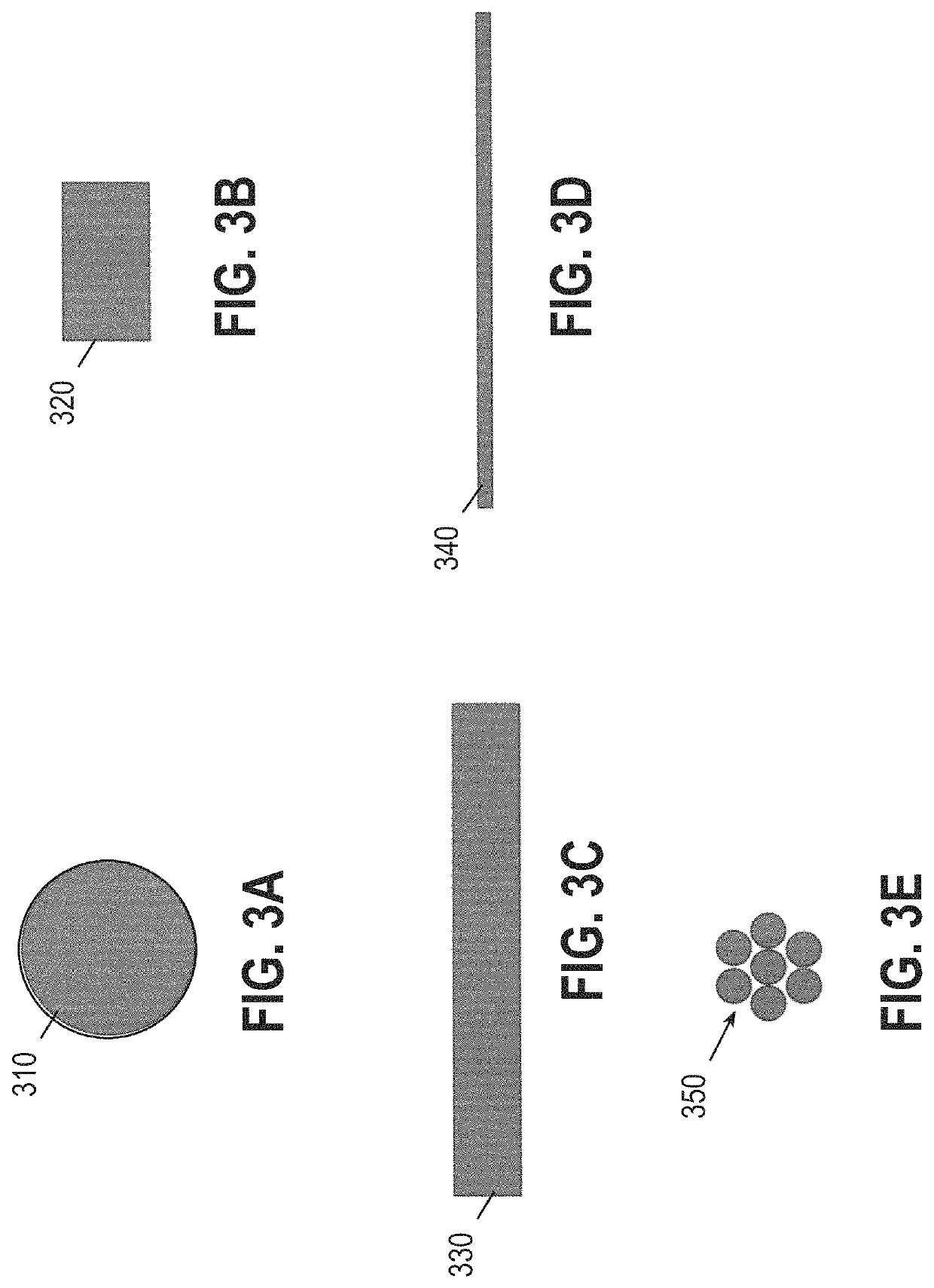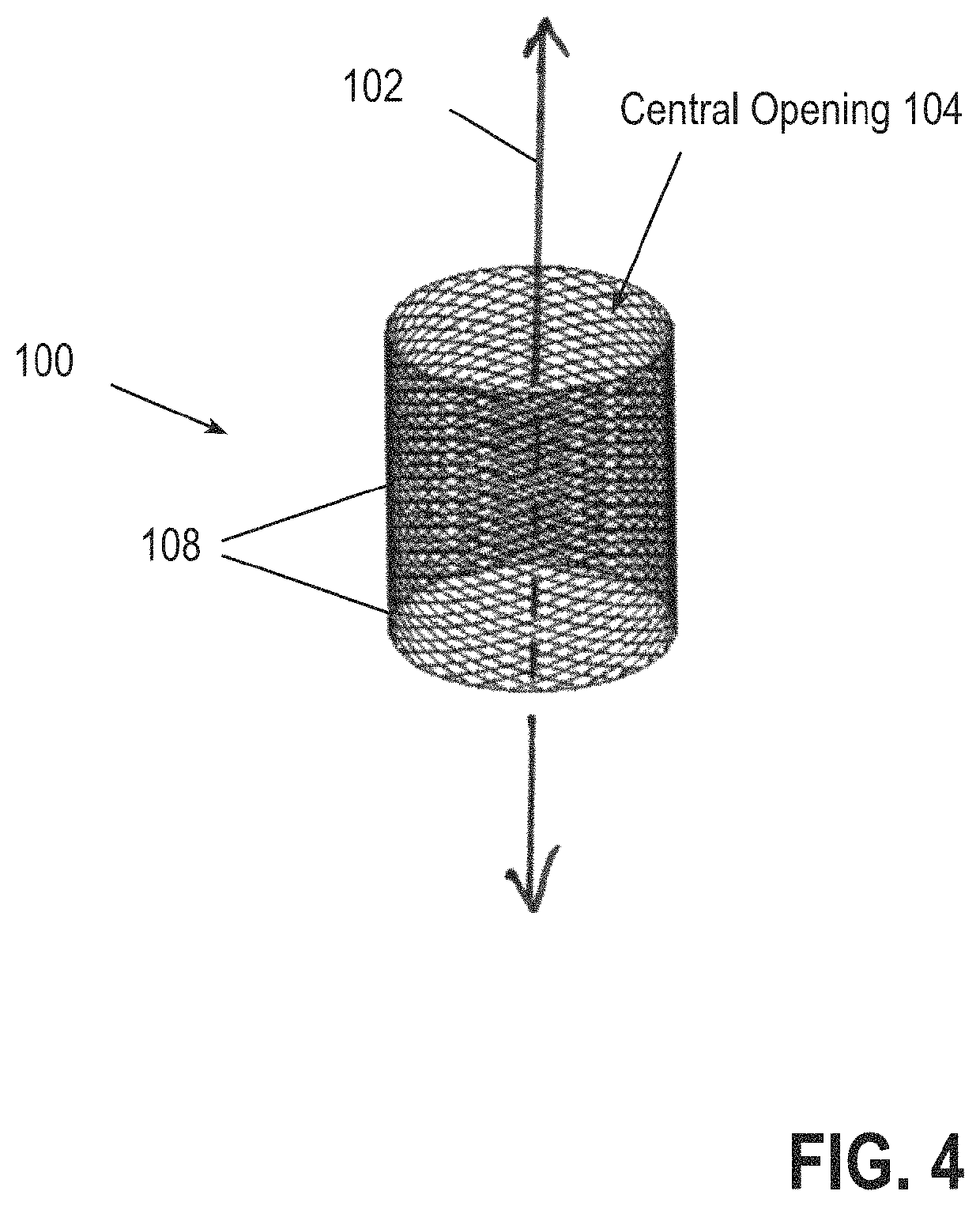Multi-axially braided reinforcement sleeve for concrete columns and method for constructing concrete columns
a technology of reinforcement sleeves and concrete, applied in the direction of forming/shuttering/falseworks, building components, building parts, etc., can solve the problems of low tensile strength of concrete, easy cracking and breaking, and disadvantages of using concrete to construct columns
- Summary
- Abstract
- Description
- Claims
- Application Information
AI Technical Summary
Benefits of technology
Problems solved by technology
Method used
Image
Examples
Embodiment Construction
Terms
[0035]As used herein, the term “concrete”, or “concrete aggregate” includes cement in various combinations with water, sand, gravel, rocks, and other materials that help to add to its strength in the particular conditions in which the concrete will be employed. For ease of reference, the term “concrete” as used herein includes any of these combinations of cement and other materials.
[0036]For purposes herein, concrete can be defined as including a cement paste, a coarse aggregate, and other materials such as sand. The term “coarse aggregate” includes larger solids, like rock and gravel. The term “cement paste” includes water mixed with cement. When fresh, cement paste typically flows in a semi-liquid manner.
Multi-Axial Braided Reinforcement Sleeve
[0037]Reference is first made to FIGS. 1 and 2. FIG. 1 is a perspective view of a multi-axially braided reinforcement sleeve 100 in an extended configuration; FIG. 2 is a perspective closeup view of a cut-out portion of the biaxially br...
PUM
| Property | Measurement | Unit |
|---|---|---|
| size | aaaaa | aaaaa |
| flexible | aaaaa | aaaaa |
| length | aaaaa | aaaaa |
Abstract
Description
Claims
Application Information
 Login to View More
Login to View More - R&D
- Intellectual Property
- Life Sciences
- Materials
- Tech Scout
- Unparalleled Data Quality
- Higher Quality Content
- 60% Fewer Hallucinations
Browse by: Latest US Patents, China's latest patents, Technical Efficacy Thesaurus, Application Domain, Technology Topic, Popular Technical Reports.
© 2025 PatSnap. All rights reserved.Legal|Privacy policy|Modern Slavery Act Transparency Statement|Sitemap|About US| Contact US: help@patsnap.com



